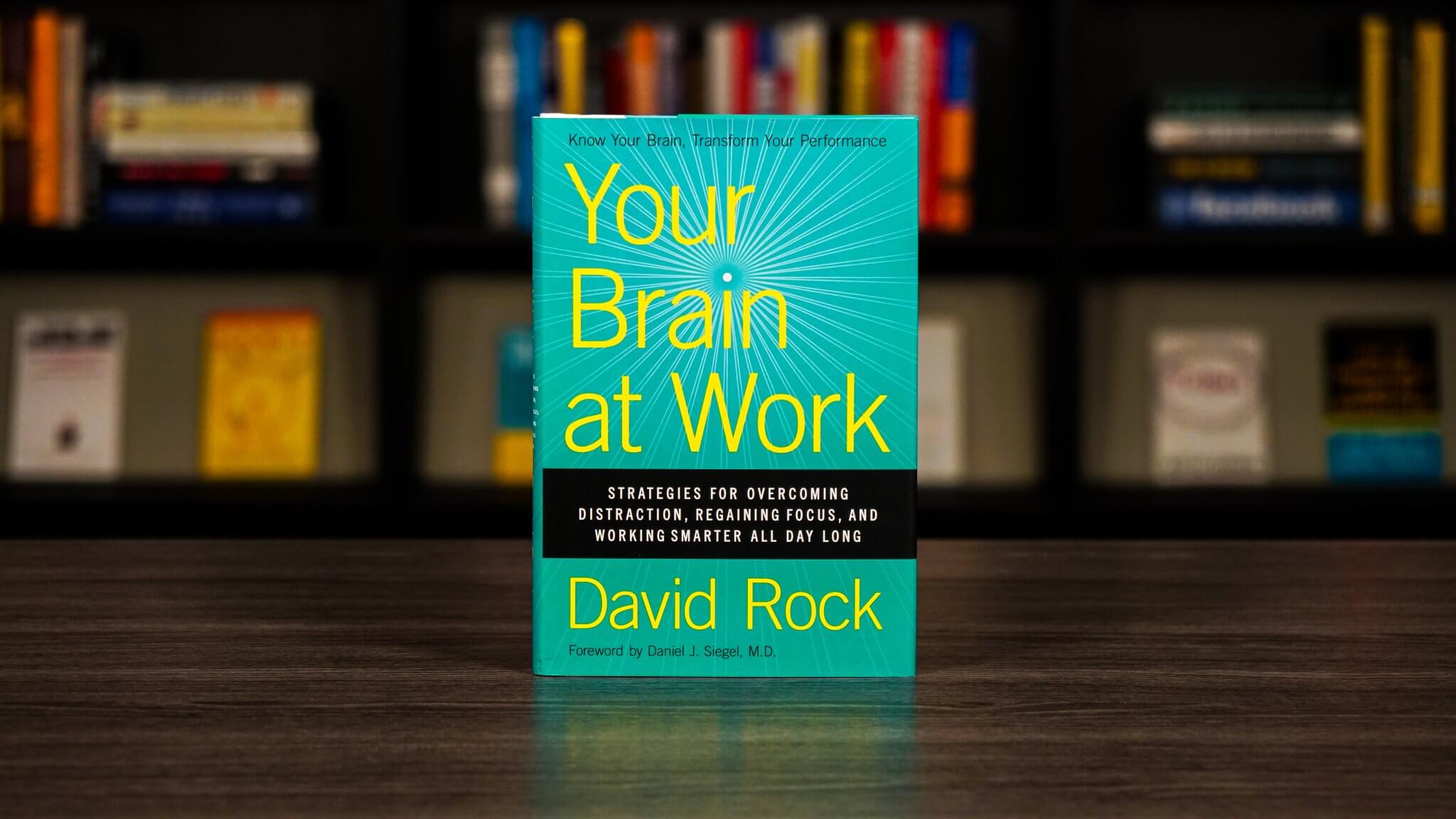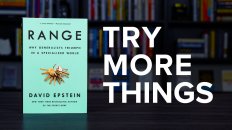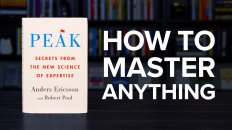The ability to focus and do creative work is more valuable than ever. And yet today we face more distractions than in the past. Your Brain At Work explains how to be more focused, stay cool under pressure, and increase creative insights by understanding how the brain operates.
This book is for anyone that wants to reduce stress, improve productivity, and collaborate more effectively with others. While many of the lessons are geared towards work life, several deal with home life scenarios as well. David Rock strikes a great balance between explaining how the brain works and providing simple actionable advice.
1. Make The Most Of Your Mental Energy
Some mental processes take up a lot more energy than others. Conscious thinking is a precious and limited resource. Schedule your most important mental processes, such as prioritizing tasks, for when you have a fresh and alert mind. Delay or avoid other high-energy conscious activities such as dealing with email.
Create visuals, storyboards, and/or lists to get important information out of the brain. Use the brain to interact with this information rather than having to store, hold, and recall it. The less you hold in your mind at once, the better. Memory starts to degrade when you try to hold more than one idea in mind.
Your best-quality thinking lasts for a limited time. Get disciplined about what you do and do not think about. Avoid paying attention to non-urgent tasks until it’s truly essential that you do so.
2. Focus On One Conscious Task At A time
The brain can only focus on one conscious task at a time. Multitasking can only be effective if all but one of the tasks are embedded (non-conscious) routines, such as driving a familiar route or going through other mindless processes.
When people do two cognitive tasks at once, their cognitive capacity can drop from that of a Harvard MBA to that of an eight-year-old. It’s a phenomenon called dual-task interference. In any situation where accuracy is important, don’t divide your attention.
Switching between conscious tasks uses energy. The term “continuous partial attention” is used to describe when someone’s focus is continuously split. The effect is constant and intense mental exhaustion.
There are three possible solutions to juggling too many tasks: (1) embed or automate more of what you do, (2) optimize the order in which you deal with information, or (3) mix up your attention by scheduling blocks of time for different modes of thinking.
3. Remove As Many Distractions As Possible
We have to deal with external and internal distractions. Studies determined that distractions eat up an average of 2.1 hours a day, employees spend an average of 11 minutes on a project before being distracted, and it takes 25 minutes to return to a task after an interruption (if we return at all).
It’s best to remove as many external distractions as possible. This might include turning off a cell phone, disabling computer alerts, or disconnecting from the Internet if it is not required for the task.
Attention is easily disrupted by internal distractions too. This is often a result of thinking about ourselves. When you need to focus, reduce the likelihood of internal distractions by clearing your mind ahead of time.
Distractions exhaust the brains limited resources, because they require inhibition in order to catch and respond to an impulse when it first emerges. Create explicit language or labels for common distracting mental patterns (e.g. “I’m on the edge of falling into the ‘Social Media Rabbit Hole’ if I don’t stop”).
Having a toolbox of such labels gives you a greater ability to recognize and prevent such patterns from taking over. It’s helpful to get into the habit of vetoing such patterns early, quickly, and often.
4. Find Ways To Surpass Your Expectations
Expectations are central in the creation of upward and downward spirals in the brain. Maintaining the right expectations in life may be central to maintaining a general feeling of happiness and well-being.
Met expectations generate a slight increase in dopamine and a slight reward response. Exceeded expectations generate a strong increase in dopamine and a strong reward response. And unmet expectations generate a large drop in dopamine level and a strong threat response.
Practice noticing what your expectations are in any given situation and work to lower them. When you step back and look at all the possible outcomes in any situation, it makes sense to minimize one’s expectations of positive rewards. Great leaders carefully manage a team’s expectations to avoid not meeting them.
To stay in a positive state of mind, find ways to keep coming out ahead of your expectations over and again, even in small ways. When a positive expectation is not being met, practice reappraising the situation by remembering it’s your brain doing something odd with dopamine.
5. Understand The Impact Of Social Status
Your brain maintains complex maps for the “pecking order” of the people surrounding you. People will go to great lengths to protect or increase their status in a group. A sense of increasing status can be more rewarding than money, and a sense of decreasing status can feel like your life is in danger.
Many of the arguments and conflicts at work, and in life, have status issues at their core. Speaking to a boss or superior generally activates a person’s threat circuitry. You can reduce status threats in others by lowering your status through sharing examples of your own mistakes or by giving them positive feedback.
A sense of increased status, even in a small way, activates your reward circuits while a sense of reduced status activates your threat circuitry. Playing or competing against yourself in a task or project increases your status without threatening others.
6. Help People Come Up With Insights
Catch yourself when you aim to provide feedback or suggest solutions to others. These situations often create an intense threat response that doesn’t help improve their performance. Instead help people come up with their own insights by focusing them on their own internal thoughts.
Direct attention towards the desired outcome rather than immediate problems. When you follow a thread down to the root of a problem it’s easy to conclude there is “too much work,” “not enough money,” or “no time.” But focusing on solutions can significantly increase the likelihood of them having an insight.
While you can’t control insight, you can facilitate the ARIA model (awareness, reflection, insight, and action) in others as a way to get past an impasse. Find ways to make it valuable for people to give themselves feedback and reward them for being mindful (thinking about their thinking).
After The Your Brain At Work Book Summary

This book summary of Your Brain At Work covered six key insights that can help you be more effective at work. However, it’s not meant to be a substitute for reading the book. That’s because the original text provides a much richer learning experience.
So if you’re a leader, manager, entrepreneur, or anyone else that wants to be more productive and creative, consider picking up a copy of the book. Your Brain At Work is available from Amazon and Apple Books.
Looking for another interesting book? Consider checking out the best leadership books or the best product management books to find your next great read.


